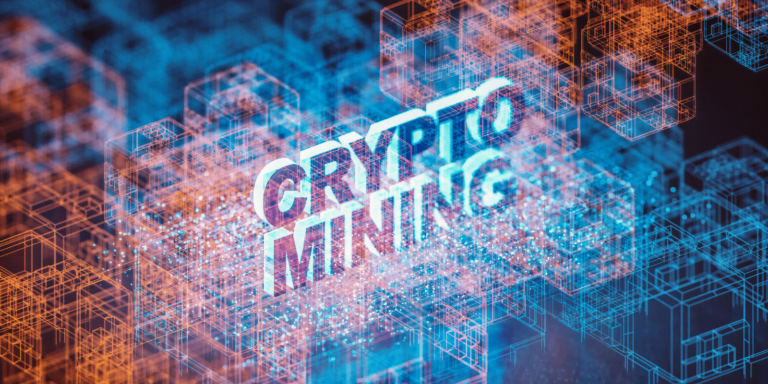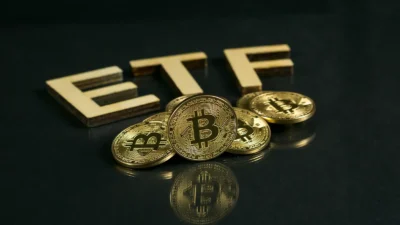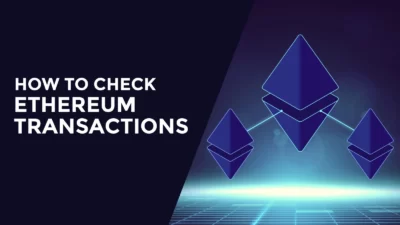Table of Contents
Toggle- What Is Crypto Mining?
- Is It Legal to Mine Crypto?
- What Makes Crypto Mining So Important?
- How Does Crypto Mining Work?
- Nodes Verify Transactions Are Legitimate
- Separate Transactions Are Added to a List of Other Transactions to Form a Block
- A Hash and Other Types of Data Are Added to the Unconfirmed Block
- Miners Verify the Block’s Hash to Ensure the Block Is Legitimate
- Once the Block is Confirmed and the Block Gets Published in the Blockchain
- If Cryptocurrency Mining Is So Simple, Why Doesn’t Everyone Do It?
- Different Methods of Mining Cryptocurrencies
- The Tax Implications of Crypto Mining
- Benefits of Mining the Crypto
- Future of Crypto Mining
Cryptocurrency mining is the process by which new coins are created. It’s also how transactions on the network are verified. Miners are rewarded with cryptocurrency for their work, and this process is at the heart of the security of the blockchain. But how does it all work? In this post, we’ll break down the basics of cryptocurrency mining, its benefits, how it works, and much more.
What Is Crypto Mining?
Crypto mining is the process of verifying transactions on a blockchain and adding them to the public ledger. In return for their services, miners are rewarded with cryptocurrency. The most well-known form of crypto mining is Bitcoin mining, which was first developed in 2009. Crypto mining requires specialized hardware and software, as well as a lot of electricity. When it comes to mining it is quite a time-consuming and difficult process as compared to mastering crypto trading.
The process can be quite lucrative, but it also comes with some risks. For instance, crypto mining farms are often located in areas with unstable electrical grids, which can lead to power outages and lost earnings. In addition, the price of the cryptocurrency can be volatile, making it difficult to predict how much money a miner will earn over time.

Despite these risks, crypto mining remains a popular way to earn cryptocurrency and support the development of blockchain technology.
Is It Legal to Mine Crypto?
There is a lot of confusion surrounding the legal status of cryptocurrency mining. In some countries, crypto mining is expressly forbidden, while in others it is perfectly legal. The truth is that the legality of crypto mining depends on several factors, including the type of cryptocurrency being mined, the location of the mining operation, and local regulations. It is the same as buying crypto. For example, if you want to buy bitcoin in Dubai, it is way to easy but buying it in some countries where crypto is completely banned is quite hard.
For example, Bitcoin mining was banned in China but is perfectly legal in most other countries. As with any new industry, the regulatory landscape surrounding crypto mining is constantly evolving. As a result, miners need to stay up-to-date on the latest legal developments to avoid running afoul of the law.
What Makes Crypto Mining So Important?
Essential Part of the Security of Blockchain Technology
Crypto mining allows new blocks of transactions to be added to the blockchain. It’s an essential part of the security of blockchain technology, and it’s also how new crypto tokens are created. Miners are rewarded with new crypto tokens for verifying and adding new blocks of transactions to the blockchain.
The popularity of crypto mining has led to a surge in demand for graphics cards, which are used for crypto mining. This has caused graphics card prices to skyrocket, which has been bad news for gamers and other consumers who need them for their work or hobbies.
Way to Mint New Coins
In cryptocurrency mining, new coins are created. In most cases, this involves solving complex mathematical problems to verify transactions on the blockchain. Miners are then rewarded with a small amount of cryptocurrency for their efforts. While the rewards may seem small, they can quickly add up over time.
In addition, crypto mining requires a significant amount of computer power, making it an expensive endeavor. As a result, crypto mining is often done by large organizations with access to cheap electricity and specialized hardware.
However, anyone with a computer and an internet connection can participate in crypto mining. All you need is the right software and a little bit of patience. With the right setup, anyone can be a crypto miner.
Helps to Secure the Network
Cryptocurrency mining helps to secure the network by ensuring that transactions are validated. This process is essential in keeping the network running smoothly and preventing fraud. In addition to helping to secure the network, crypto mining also helps to decentralize it.

By distributing the process of verifying and validating transactions among a large number of miners, the network becomes more resistant to tampering or censorship. Consequently, crypto mining plays an important role in both securing and decentralizing the cryptocurrency network.
How Does Crypto Mining Work?
Crypto mining works through the following steps.
Nodes Verify Transactions Are Legitimate
For a transaction to be considered valid, it must be verified by the nodes in the network. The node that solves the problem first is rewarded with a small amount of cryptocurrency. This incentive system ensures that there is always someone verifying transactions and helps to prevent fraud.
While crypto mining can be a lucrative business, it requires significant investment in hardware and power resources. As a result, many people choose to pool their resources and form mining pools. These pools allow smaller miners to join together and share in the rewards.
Separate Transactions Are Added to a List of Other Transactions to Form a Block
This block is then added to the blockchain, which is a distributed ledger of all the transactions that have taken place. The blockchain is constantly growing as new blocks are added, and each block contains a timestamp and a link to the previous block.
This ensures that the blockchain is tamper-proof, as any attempt to change a transaction would require not only changing the block containing that transaction but also all of the subsequent blocks in the chain. As a result, crypto mining helps to secure the blockchain and ensure its integrity.
A Hash and Other Types of Data Are Added to the Unconfirmed Block
Once the block has been verified by the nodes in the network, it is added to the blockchain with a hash and other data. A hash is a unique code that acts as a fingerprint for each block and helps to ensure its authenticity.
Miners Verify the Block’s Hash to Ensure the Block Is Legitimate
For a block to be added to the blockchain, its hash must meet certain requirements set by the network. This process helps to ensure that the block is legitimate and has not been tampered with.
Once the Block is Confirmed and the Block Gets Published in the Blockchain
Once a block is added to the blockchain, miners who helped validate the block are rewarded with a small amount of cryptocurrency. This serves as an incentive for miners to continue participating in the network and helps to ensure that there is always someone verifying transactions.
If Cryptocurrency Mining Is So Simple, Why Doesn’t Everyone Do It?
Crypto Mining Is Resource-Intensive
While it is possible to run a small-scale operation with just a few computers, large-scale crypto mining requires significant investment. Not only do you need to purchase expensive equipment, but you also need to have access to cheap electricity.
Crypto mining is therefore not something that just anyone can do – it requires significant resources. This is one of the reasons why not everyone is involved in crypto mining.
Crypto Mining Is Expensive
Crypto mining operations require a significant investment in hardware and electricity, making it expensive to run. Additionally, as more people become involved in crypto mining and the network becomes more secure, the process of solving mathematical problems becomes harder and requires even more computing power. It is not as simple as the way you buy or sell Bitcoin in Dubai or anywhere else which you can do in a couple of seconds. Mining is a marathon as compared to it.
This means that miners may need to continually upgrade their equipment to stay competitive, leading to even higher costs.
Crypto Mining Can Be Risky
Crypto mining also involves some level of risk, as the value of cryptocurrencies can be volatile and there is always the possibility that new technologies may make your equipment obsolete. Additionally, crypto mining operations can also be subject to government regulations and crackdowns.
The ROI is not What It Used to Be
The return on investment for crypto mining may not be as good as it used to be. As more people become involved in mining and the network becomes more secure, there will be a smaller reward for each block mined, and at the end of the day, the ROI might not meet your expectations.
It’s Not Feasible (Or It’s Prohibited) In Your Geographic Location
Finally, it’s important to consider the feasibility of crypto mining in your location. Some countries, such as China and Venezuela, have cheap electricity but strict government regulations that make it difficult for individuals to mine cryptocurrencies.
In other locations, electricity may be too expensive or it may even be prohibited by laws or local customs. It’s important to carefully research the legal and practical considerations of crypto mining before investing in it.
Different Methods of Mining Cryptocurrencies
ASIC Mining
ASIC mining is a type of cryptocurrency mining that is performed using specialized hardware known as an ASIC (Application-Specific Integrated Circuit). ASICs are designed specifically for mining cryptocurrencies and are much more efficient than traditional CPU or GPU-based miners.
Cloud Mining
Cloud mining is a type of cryptocurrency mining that is performed using remote data centers. This type of mining allows people to mine cryptocurrencies without having to purchase or maintain their mining hardware.
CPU Mining
CPU mining is a type of cryptocurrency mining that is performed using a central processing unit (CPU). This type of mining is relatively simple and can be done using any computer with a CPU. However, CPU miners are not very efficient and are not recommended for serious cryptocurrency mining.
GPU Mining
GPU mining is a type of cryptocurrency mining that is performed using a graphics processing unit (GPU). GPUs are more powerful than CPUs and are therefore more efficient at mining cryptocurrencies. However, they also require more electricity and generate more heat, so they are not ideal for large-scale mining operations.
FPGA Mining
FPGA mining is a type of cryptocurrency mining that is performed using a field-programmable gate array (FPGA). FPGAs are similar to ASICs in that they are designed specifically for mining cryptocurrencies, but they are more flexible than ASICs and can be repurposed for other uses if needed.
The Tax Implications of Crypto Mining
Unlike trading crypto in countries where it is legal, tax implications of crypto mining are still somewhat unclear, as the IRS has not yet issued any specific guidance on the matter.

In crypto trading, if you want to sell or buy USDT in Dubai or some other country, there are defined percentages you have to pay as a tax. However, it is generally agreed that crypto mining should be treated as a business activity, and therefore profits from mining are subject to tax. Furthermore, any expenses incurred in the course of mining (e.g. electricity costs) can be deducted from tax liability.
It is also worth noting that crypto miners may be subject to self-employment tax if they are not employees of a company. As such, there are several tax implications to consider when engaging in crypto mining. However, with proper planning and guidance from a tax professional, miners can ensure that they comply with all applicable tax laws.
Benefits of Mining the Crypto
Decentralized
One of the primary benefits of cryptocurrency mining is that it is decentralized. Unlike traditional fiat currencies, which are controlled by central banks, cryptocurrencies are not subject to the whims of governments or financial institutions.
Instead, they are controlled by the network of miners who work to maintain the blockchain. This decentralization gives cryptocurrencies a great deal of stability and makes them less susceptible to inflation.
Secure
Another benefit of cryptocurrency mining is that it helps to secure the network. To add a new block to the blockchain, miners must solve a complex mathematical problem. This problem can only be solved by trial and error, and it becomes more difficult as more blocks are added to the chain.
As a result, it becomes increasingly difficult for anyone to tamper with the blockchain or perform double-spending.
Profitable
Cryptocurrency mining can also be quite profitable. While the mining rewards are not as high as they once were, it is still possible to make a decent return on your investment. Additionally, many people choose to mine cryptocurrencies as a way to support the network and earn a passive income.
Future of Crypto Mining
The future of crypto mining is looking very bright. With the ever-growing popularity of cryptocurrencies, the need for miners will only continue to increase. In addition, as new mining technologies are developed, it will become easier and cheaper to mine cryptocurrencies, which will also contribute to the growth of this industry. Overall, it’s safe to say that the future of crypto mining is very promising!








